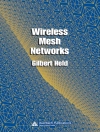Swallowing sound recognition is an important task in bioengineering that could be employed in systems for automated swallowing assessment and diagnosis of abnormally high rate of swallowing (aerophagia) [1], which is the primary mode of ingesting excessive amounts of air, and swallowing dysfunction (dysphagia) [2]-[5], that may lead to aspiration, choking, and even death. Dysphagia represents a major problem in rehabilitation of stroke and head injury patients. In current clinical practice videofluoroscopic swallow study (VFSS) is the gold standard for diagnosis of swallowing disorders. However, VFSS is a ti- consuming procedure performed only in a clinical setting. VFSS also results in some radiation exposure. Therefore, various non-invasive methods are proposed for swallowing assessment based on evaluation of swallowing signals, recorded by microphones and/or accelerometers and analyzed by digital signal processing techniques [2]-[5]. Swallowing sounds are caused by a bolus passing through pharynx. It is possible to use swallowing sounds to determine pharyngeal phase of the swallow and characteristics of the bolus [2].
Cuprins
Best Application Paper.- Wireless LAN Load-Balancing with Genetic Algorithms.- Machine Learning 1.- Computer Vision System for Manufacturing of Micro Workpieces.- Recognition of Swallowing Sounds Using Time-Frequency Decomposition and Limited Receptive Area Neural Classifier.- Visualization of Agriculture Data Using Self-Organizing Maps.- Machine Learning 2.- Graph-based Image Classification by Weighting Scheme.- A Machine Learning Application for Classification of Chemical Spectra.- Learning to rank order — a distance-based approach.- Web Technologies.- Deploying Embodied AI into Virtual Worlds.- Using Ontology Search Engines to support Users and Intelligent Systems solving a range of tasks.- Information Management for Unmanned Systems: Combining DL-Reasoning with Publish/Subscribe.- Intelligent Systems.- Silog: Speech Input Logon.- An Electronic Tree Inventory for Arboriculture Management.- Conversational Agents in E-Learning.- AI In Healthcare.- Breast cancer diagnosis based on evolvable fuzzy classifiers and feature selection.- Executing Medical Guidelines on the Web: Towards Next Generation Healthcare.- A Hybrid Constraint Programming Approach for Nurse Rostering Problems.- Using Evolved Fuzzy Neural Networks for Injury Detection from Isokinetic Curves.- Short Papers.- An evolutionary approach to simulated football free kick optimisation.- An Application of Artificial Intelligence to the Implementation of Electronic Commerce.- Hybrid System for the Inventory of the Cultural Heritage Using Voice Interface for Knowledge acquisition.












